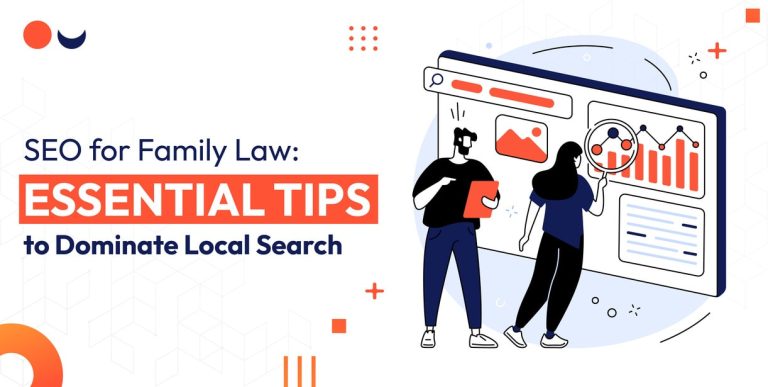A solid online presence is critical for the success of any e-commerce website in the fast-paced world of online commerce. SEO for e-commerce is critical for increasing organic traffic and exposure on search engine result pages. E-commerce enterprises can enhance their website’s position, attract more users, and increase revenue by employing effective SEO.
In this comprehensive guide, we will look at e-commerce strategy, ecommerce keyword research, technical SEO for E-Commerce Websites, content marketing for e-commerce sites, on-page SEO for e-commerce sites, and link building for e-commerce sites.
E-commerce Strategy
Before digging into SEO strategies, it’s critical to have a robust e-commerce strategy in place. Defining your target audience, creating your unique selling propositions, and conducting market research to understand your competition are all part of this process.
You can link your SEO efforts with your business goals and lay a solid foundation for success if you have a defined e-commerce plan.
Ecommerce Keyword Research
Keyword research is a critical component of SEO for e-commerce websites. It entails determining the keywords and phrases your target audience searches for while seeking similar items or services.
Use keyword research tools to find appropriate keywords with a high search volume and low competition. To increase your search engine rankings, use these keywords naturally in your website’s content, such as product descriptions, category pages, and blog entries.
Technical SEO for E-commerce Websites
Technical SEO focuses on optimizing the technical aspects of your e-commerce website to enhance its visibility to search engines. Some key technical SEO elements include:
Site Speed:
Improve user experience and search engine rankings by optimizing your website’s loading speed. Image compression, browser caching, and CSS and JavaScript file minification are all options.
Mobile-Friendliness:
Make sure your website is mobile-friendly and responsive. Because most internet users use mobile devices, Google prioritizes mobile-friendly websites in its search results.
URL Structure:
Make clean, descriptive URLs with relevant keywords. Use hyphens to separate words and avoid long URLs that can be difficult to grasp for both people and search engines.
XML Sitemap:
Create and upload an XML sitemap to search engines to aid in the crawling and indexing of your website.
Content Marketing for Ecommerce Sites
Content marketing is an effective method for attracting and engaging your target audience while also improving the SEO of your website. Create a content marketing strategy that includes creating high-quality, useful, engaging material, including blog articles, product guides, and videos.
To enhance visibility and attract traffic to your e-commerce website, optimize your content with relevant keywords and promote it across social media channels.
On-Page SEO for E-commerce Websites
On-page SEO For E-commerce involves optimizing the individual pages of your e-commerce website to improve its search engine rankings. Here are some key on-page SEO techniques for e-commerce websites:
Meta Tags:
Create interesting and keyword-rich meta titles and descriptions for each page. These components are visible in search engine results and can substantially impact click-through rates.
Product Descriptions:
Create original and persuasive product descriptions that showcase your items’ features, benefits, and unique selling factors. While providing valuable information to potential clients, naturally incorporate relevant keywords.
Image Optimisation:
Use descriptive filenames and alt tags to optimize product photos. This assists search engines in comprehending the content of the photos and increases the likelihood of appearing in image search results.
Internal Linking:
Establish a sensible internal linking structure to assist search engines in navigating your website and discovering relevant material. Within your e-commerce site, include links to similar products, categories, and blog entries.
Link Building for E-commerce Sites
Link building is an important off-page SEO for ecommerce approach to obtaining high-quality backlinks from credible websites. Backlinks are regarded by search engines as votes of confidence, indicating that your website is trustworthy and relevant. Some effective e-commerce link development tactics include:
Influencer Outreach:
Work with industry professionals or influencers to promote your items and gain backlinks. Influencers can write product reviews, highlight them, or participate in sponsored initiatives.
Guest Blogging:
Submit guest pieces to authoritative blogs in your field with connections to your e-commerce website. This creates backlinks and promotes you as a subject matter expert in your field.
Local Citations and Online Directories:
Submit your e-commerce website to relevant online directories and local company listings. This can assist in increasing the visibility of your website in local search results and produce useful backlinks.
Broken Link Building:
Identify broken links on other websites within your industry and contact the website owners, suggesting your content as a replacement. This can be an effective way to earn high-quality backlinks.
Finally, a complete SEO strategy is critical for the success of e-commerce businesses. Increase your website’s visibility, attract more targeted traffic, and drive sales by following the comprehensive guide to SEO for e-commerce websites and focusing on e-commerce strategy, ecommerce keyword research, technical SEO, content marketing, on-page SEO, and link building.
Remember that SEO is a continuous process; therefore, check and analyze your website’s performance regularly, change your techniques as needed, and stay up to speed on the newest SEO trends and best practices to maintain a competitive edge in the e-commerce market.
How to Perform Ecommerce Keyword Research
Effective keyword research is crucial for optimizing your e-commerce website and driving targeted organic traffic. Here’s a step-by-step guide on how to perform ecommerce keyword research:
Understand Your Target Audience:
Begin by learning about your target audience and their search intent. Determine their demographics, preferences, and requirements. Consider the terms they could use to find similar items or services to yours.
Make a List of Relevant Topics:
Make a list of broad subjects linked to your e-commerce business through brainstorming. These themes should be relevant to your company’s products, categories, and industry. For example, if you sell outdoor goods, relevant themes could include camping equipment, hiking gear, or adventure travel.
Use Keyword Research Tools:
Use keyword research tools to broaden your initial topic list and find precise keywords. Popular tools include Google Keyword Planner, SEMrush, Ahrefs, and Moz. Enter your broad subjects or seed keywords into these tools to get a list of related keywords.
Analyze Search Volume and Competition:
Determine the volume of searches and the level of competition for each keyword. The number of monthly searches for a certain term is referred to as search volume, whereas the difficulty level in ranking for that phrase is called competitiveness. Aim for keywords with a high search volume and low competition.
Focus on Long-Tail Keywords:
Long-tail keywords are more precise search phrases with lower search volume but higher intent. These keywords frequently imply that the searcher is on the verge of making a purchase. Here’s an example Instead of “hiking boots,” try searching for “best waterproof hiking boots for women.”
Analyze Competitor Keywords:
Examine the keywords that your competitors are using. This can give you insights into their effective SEO techniques and help you find new keywords for your e-commerce business. You can see which organic keywords your competitors rank for using tools like SEMrush or Ahrefs.
Consider Seasonal and Trending Keywords:
Consider incorporating seasonal or trending keywords into your strategy, depending on your products or industry. Identify keywords that are popular during specific seasons or align with current trends. This can help you capitalize on seasonal demand and drive targeted traffic to your e-commerce site.
Evaluate Keyword Relevance:
Ensure your selected keywords are relevant to your products, categories, and website content. Avoid targeting keywords that are too broad or unrelated to your offerings, as they may not attract the right audience or result in conversions.
Group Keywords and Assign them to Pages:
Sort keywords by relevance and intent. Assign relevant keywords to relevant pages on your e-commerce site. Product-specific keywords, for example, can be applied to particular product pages, while broad category keywords can be assigned to category pages.
Monitor and Refine:
Monitor your keyword performance regularly with analytics tools such as Google Analytics or search engine consoles. Examine how effective your chosen keywords are in driving traffic and conversions. Replace ineffective keywords with new ones, or optimize current content to target more competitive keywords.
Keep in mind that keyword research is a continual process. Keep up with industry developments, keep an eye on changes in search behavior, and adjust your keyword approach accordingly. By undertaking extensive keyword research, you can optimize your e-commerce website, enhance search engine results, and attract the ideal audience to boost conversions and sales.
key strategies to optimize e-commerce
On-page SEO is crucial to optimizing your e-commerce website for search engines and improving its visibility in search results. Regarding e-commerce websites, several specific on-page SEO techniques can help enhance your website’s performance and drive organic traffic. Here are some key strategies to consider:
Keyword Optimization:
Keywords are important in on-page SEO for e-commerce websites. Determine appropriate keywords that correspond to the search intent of your items, categories, and target audience. Incorporate these keywords strategically throughout the content of your website. Concentrate on improving the following aspects:
– Product Titles: Include important keywords in your product titles to boost search engine visibility. Create descriptive and appealing descriptions for your products that appropriately represent them while persuading users to click.
– Product Descriptions: Create product descriptions that are distinct, engaging, and keyword-rich. Highlight your items’ features, benefits, and unique selling factors while naturally combining relevant keywords. Avoid using manufacturer-supplied descriptions because they are most certainly replicated across many websites.
– Category and Subcategory Pages: Optimize your category and subcategory pages by including relevant keywords in the headings, subheadings, and product listings. This helps search engines understand the content and relevance of these pages.
Meta Tags Optimization:
Meta tag optimization is critical for increasing click-through rates and search engine exposure. Take note of the following elements:
– Meta Titles: Create appealing and keyword-rich meta titles for each page. To ensure that they appear in full on search engine result pages (SERPs), keep them under 60 characters. Include your brand name and important keywords to increase visibility and grab users’ attention.
– Meta Descriptions: Create compelling and useful meta descriptions that accurately summarize the page’s content. To ensure that they are displayed in full on SERPs, keep them under 160 characters. Incorporate relevant keywords to pique users’ interest and urge them to visit your website.
Image Optimization:
Optimizing product photos increase your website’s visual appeal, search engine exposure, and performance. Take a look at the following:
– File Names: Give your product photographs descriptive file names with relevant keywords. Avoid using generic names like “IMG1234.jpg” in favor of something like “black-leather-handbag.jpg.” This gives search engines context and improves image search ranks.
– Alt Tags: For your product photos, use descriptive alt tags. Alt tags are alternative text descriptions search engines use to understand image content. Use pertinent keywords and be descriptive while remaining concise.
User-Friendly URLs:
Create URLs that are both user-friendly and SEO-friendly for your e-commerce website. URLs should be descriptive, short, and contain relevant keywords. In your URLs, avoid utilizing digits or strange characters. Clean, understandable URLs help search engines and users grasp the content of your pages.
Internal Linking:
Create a sensible internal linking structure for your e-commerce website. Include links to similar goods, categories, and blog topics within your material. Internal linking aids in the distribution of link equity across your website, increasing the discoverability of your content and improving user experience. For internal links, utilize keyword-rich anchor text, but make sure it is relevant and adds value to the user.
On-page SEO is a continual activity, so use analytics tools like Google Analytics and search engine dashboards to regularly analyze your website’s performance. To boost search engine results, create targeted traffic, increase conversions on your SEO for e-commerce websites, analyze user behavior, make data-driven decisions, and tweak your on-page SEO techniques.
Frequently Asked Questions
What Is Ecommerce SEO?
Why Is SEO Important for Ecommerce Sites?
How Is SEO for E-commerce Different?
How do I Find the Right Keywords For my Ecommerce Store?
What Is The Most Overlooked Aspect of SEO For E-commerce Brands?
Do also read our other informative Blog Post: Keyword Research For E-Commerce SEO | Technical SEO For E-Commerce Websites | On-Page SEO For E-Commerce | Off-Page SEO | Tips for Writing Product Descriptions | optimize eCommerce Site Structure







